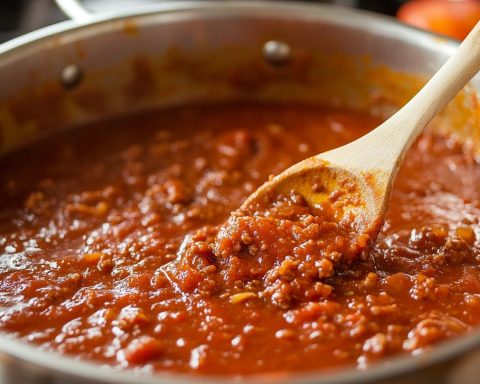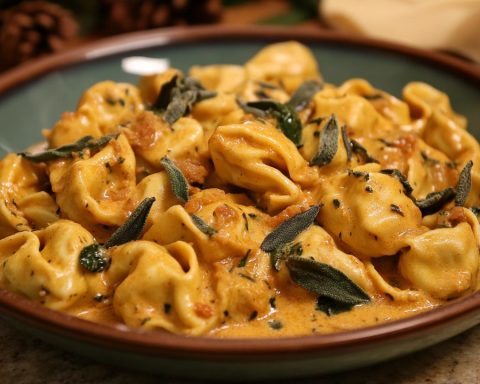In the heart of Persian kitchens, where aromas weave stories and flavors evoke fond memories, Kaakoni rises as a cherished dish that transcends time. Prepared with tender love and a medley of spices, this divine chicken stew is a testament to the rich culinary heritage of Iran. Perfect for festive gatherings and intimate family dinners, Kaakoni fills the air with a warm, inviting fragrance and captures the essence of home-cooked goodness.
This dish is characterized by its enchanting blend of savory and aromatic ingredients. Juicy chicken pieces are lovingly simmered in a fragrant sauce of caramelized onions, tomatoes, and a touch of saffron magic, creating a luxurious, velvety texture that envelops the senses. It’s a comforting meal that speaks of centuries-old traditions and celebrates every shared moment around the table.
Ingredients:
– 1 kg of chicken pieces (preferably bone-in for extra flavor)
– 2 large onions, thinly sliced
– 3 cloves of garlic, minced
– 4 medium tomatoes, peeled and chopped
– 1 tbsp tomato paste
– 1 tsp turmeric
– ½ tsp ground cinnamon
– 1 tsp salt
– ½ tsp black pepper
– A generous pinch of saffron threads, steeped in 2 tbsp warm water
– 4 tbsp vegetable oil or ghee
– 1 cup water or chicken broth
– Fresh parsley or cilantro for garnish
Instructions:
1. Preparation of Ingredients: Begin by gathering all your ingredients, ensuring everything is prepped and ready to go. This mise en place will streamline your cooking process and ensure vibrant flavors.
2. Sauté the Onions and Garlic: In a large, heavy-bottomed pot, heat the vegetable oil over medium heat. Add the sliced onions and sauté until they become translucent and start to caramelize, about 10-12 minutes. Stir in the minced garlic and cook for an additional 2 minutes until fragrant.
3. Brown the Chicken: Increase the heat to medium-high and add the chicken pieces to the pot. Sear them on all sides until they acquire a golden crust. This step seals in the juices and keeps the chicken tender.
4. Create the Flavor Base: Sprinkle the turmeric, ground cinnamon, salt, and black pepper over the chicken and onions. Stir well to coat the chicken with these aromatic spices. This foundation is what gives Kaakoni its unique, heartwarming taste.
5. Add the Tomatoes: Incorporate the chopped tomatoes and tomato paste into the pot. Stir everything together and let the flavors meld for about 5 minutes as the tomatoes release their juices and the paste thickens.
6. Simmer with Saffron: Pour in the water or chicken broth along with the saffron water. Bring the mixture to a gentle boil, then reduce the heat to low. Cover the pot and let the chicken simmer for about 45 minutes, or until it becomes tender and the sauce has thickened to your liking.
7. Finish and Serve: Taste and adjust the seasoning if necessary. Once the chicken is perfectly tender, remove the dish from heat. Garnish with fresh parsley or cilantro for a burst of color and freshness.
Cooking Tips:
– For deeper flavor, marinate the chicken in a mixture of yogurt, lemon juice, and a pinch of salt overnight before cooking.
– You can add a handful of raisins or apricots during the simmering process for a subtle hint of sweetness.
Serving Suggestions:
Kaakoni is best enjoyed with a side of fluffy basmati rice or warm, buttery flatbread to soak up every drop of the rich sauce. Pair it with a crisp salad or a dollop of thick yogurt to complement its robust flavors. A glass of chilled doogh (a yogurt-based drink) makes for a traditional accompaniment that balances the warmth of the spices.
This nourishing and aromatic Kaakoni dish is not just a meal; it’s an experience, a culinary journey that invites everyone to relish the joys of Persian hospitality in every bite.
Unlocking the Mysteries of Kaakoni: Beyond the Recipe
Iranian cuisine never fails to intrigue and delight food enthusiasts, and among its many culinary treasures, Kaakoni holds a special place. While the dish itself is a symbol of rich culinary traditions, there are lesser-known facts and interesting controversies surrounding it that are worth exploring.
Did Kaakoni Always Include Chicken? The historical roots of Kaakoni are somewhat of a culinary enigma. Some gastronomists argue that chicken became a primary ingredient much later, and the dish was originally prepared with various meats, depending on regional availability. It highlights the adaptability and regional twists that Persian dishes embrace.
Saffron: The Golden Debate Saffron, dubbed “red gold,” plays a crucial role in enhancing the aroma and color of Kaakoni. However, its use has sparked debates due to its high cost and rarity, leading some cooks to opt for turmeric alone as a substitute. Purists, however, insist that true Kaakoni cannot exist without saffron’s distinctive touch.
Flavor Variations: A Hidden Diversity While the classic recipe involves a specific set of spices, Kaakoni is known to vary from one Iranian household to another. Ingredients like dried lime or barberries are occasionally included to infuse unexpected bursts of flavor, adding to the dish’s complexity.
Is It Just About Taste? For many Iranians, Kaakoni isn’t solely about savoring exquisite flavors; it’s a medium for cultural expression and storytelling. It transforms gatherings into cherished communal experiences, weaving bonds through shared meals.
Explore more of what Persian cuisine has to offer by visiting Saveur or delve into the world of spices with Epicurious.








